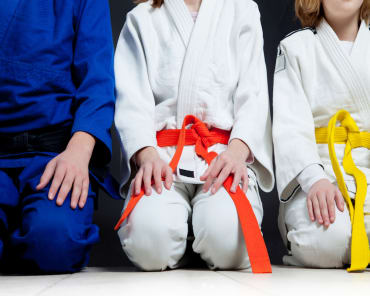
Brazilian Jiu-Jitsu (BJJ) is a martial art that is known for its technical complexity and emphasis on ground fighting. It is also renowned for its belt system, which serves as a visible representation of a practitioner's skill and dedication. Among the many BJJ belt colors, the blue belt is often considered the first major milestone on the journey to becoming a proficient BJJ practitioner. In this blog post, we'll explore what it takes to earn a BJJ blue belt and the key elements of this exciting journey.
1. Consistent Training
The foundation of any progress in BJJ is consistent training. To earn your blue belt, you must commit to regular training sessions. This means attending classes, practicing techniques, and rolling with training partners as often as possible. Consistency builds muscle memory, refines techniques, and accelerates your understanding of BJJ's principles.
2. Technical Knowledge
A blue belt should possess a solid foundation of technical knowledge. You must demonstrate proficiency in fundamental BJJ techniques, including sweeps, escapes, submissions, and positional control. Your instructors will expect you to execute these techniques with precision, displaying a deep understanding of the mechanics behind them.
3. Mat Awareness
Mat awareness is crucial in BJJ. As you progress toward a blue belt, you should develop a heightened sense of your positioning on the mat. This includes understanding the distance between you and your opponent, recognizing potential submission setups, and knowing when to transition between positions. Mat awareness not only improves your defensive abilities but also allows you to capitalize on opportunities for offense.
4. Defensive Skills
BJJ blue belts should have a strong defensive game. You should be proficient in escapes, preventing submissions, and maintaining guard positions. Being able to defend effectively is essential before you can focus on offense. A blue belt should be challenging to submit, which reflects your ability to survive and escape precarious situations.
5. Rolling Experience
Rolling (sparring) is an essential part of BJJ training. To earn your blue belt, you need to have accumulated a significant amount of rolling experience. This involves applying your knowledge and techniques in real-time against resisting opponents. It's a test of your adaptability and the practical application of what you've learned in class.
6. Composure and Mental Toughness
The mental aspect of BJJ is often underestimated. To earn your blue belt, you must develop composure and mental toughness. BJJ can be physically and mentally demanding, and you'll face frustration, fatigue, and adversity. Learning to stay calm under pressure, strategize during a match, and maintain a growth mindset are all critical aspects of progressing in the sport.
7. Respect and Sportsmanship
BJJ promotes values like respect and sportsmanship. To earn your blue belt, you must embody these principles. Show respect to your instructors, training partners, and opponents. Be humble in victory and gracious in defeat. Remember that BJJ is not just a sport but also a community, and your behavior reflects on both you and your academy.
Conclusion
Earning a BJJ blue belt is a significant accomplishment and a testament to your dedication, technical knowledge, and overall growth as a practitioner. It represents a transition from a novice to an intermediate level in Brazilian Jiu-Jitsu. The journey to a blue belt is challenging, but it's also incredibly rewarding. It's not just about the belt but about the personal growth, discipline, and skills you develop along the way. So, embrace the journey, keep training, and enjoy the evolution of your BJJ game.






